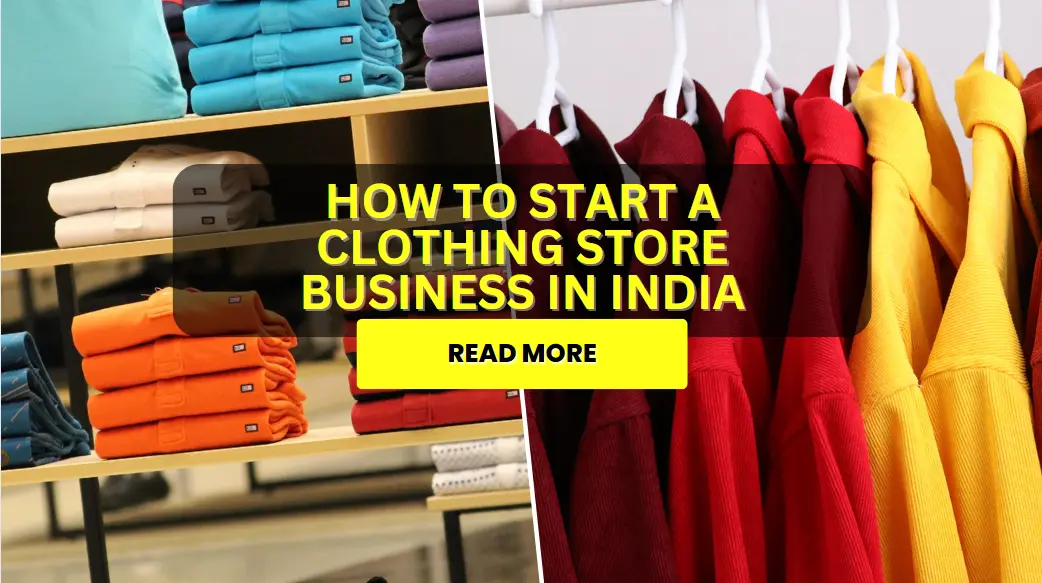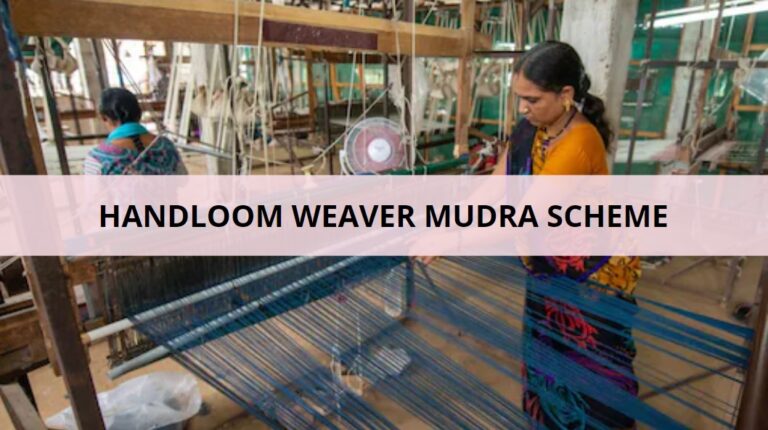Are you ready to learn more about the exciting world of retail? You’re in the proper place if you’ve ever wanted to open your own clothes store in India! We’ll walk you through all you need to know about achieving your vision in this comprehensive guide. We can help you with anything from understanding the market environment to managing laws and regulations and creating an effective company plan. Now, gather your entrepreneurial power and let’s go out on this thrilling trip to establish a profitable clothes store in India!
India’s clothing business is very important since it reflects the nation’s diverse fashion industry and rich heritage of culture. The demand for clothing is rising due to a growing middle class and a growing population, which presents profitable opportunities for entrepreneurial individuals to enter the retail sector for themselves. Here is a thorough guide to get you started if you’re thinking about opening a clothes store in India.
Who hasn’t been to a “clothing store/shop” in the world? Everyone has! We Indians always have to buy clothes, whether it’s for festivals or weddings, diwali or birthday celebrations.
Ever thought about starting a “Clothing Store business” similar to the one you already shop at?
Now, give up thinking and go to start a clothing business!
Start your clothing business in India
If you’re searching for fresh ideas for clothing businesses in India, starting a “clothing store business” might be a very profitable activity. Then, this blog is sure to help you in learning how to launch a clothes business. Of course, there are failures and lots of poorly running clothes businesses and shops. These are primarily the result of insufficient preparation, or most likely no planning at all.
Here are 10 easy steps to setting up a business plan for a clothes store in India:
Gather your money for investment
Opening a shop or clothing store requires a significant financial investment. You have to invest money in order to make money in the clothing business. You most likely need to take out a small business bank loan in order to finance your business.
Loans from friends and family are a common source of funding for small business owners, as some clothing stores and shops are family-run enterprises. See what works well for you.
It is very important to remember that you will require a substantial quantity of money to begin.
You’ll have to spend money on merchandise, rent for the store, marketing supplies, fixtures and lighting for the shop, and other costs.
Complete your Legal Shop Registration
First, follow the rules for starting a business in India. You need to register your business on both state and central government websites.
Make sure your clothing store is registered with the proper government offices.
Get the licenses and permits you need. One important license is the Shops and Establishments Act license.
Learn about taxes. You’ll need to register for GST (Goods and Services Tax) and make sure you file your taxes correctly.
Also, register your business with the Ministry of MSME (Micro, Small, and Medium Enterprises) to get extra benefits from the central government. This is called Udyam Registration Certificate.
Choose your location carefully.
Location is Key: Picking the right spot for your clothing store is super important. Think about how many people walk by, how easy it is to get to, and if it’s in the right area for your customers.
Follow the Crowd: It’s smart to set up shop where there are lots of potential customers.
More People, More Sales: Look for places with tons of people passing by. The more people, the more chances to sell your clothes.
Affordable Options: If the rent is too high in some areas, find spots where lots of people go every day. Also, check out neighborhoods where there aren’t many stores like yours.
Less Competition, More Success: It’s usually better to move to an area where there aren’t too many similar stores around. That way, you have a better chance of standing out and making sales.
Store Setup and Design
Make your store look nice and welcoming.
Organize the space well so customers can move around easily.
Choose decorations and furniture that match your brand and what your customers like.
Learn from your Competition
Visit local clothing stores nearby.
Look at what they sell and how they set up their displays.
Pay attention to when and where they’re open, what they offer, and any extra services they provide.
Be fresh, Competitive, and Creative at all Times.
Choose a Catchy Name: Pick a cool name for your clothing store that people will remember easily.
Make it Look Good Inside and Out: Spend time and some money to make your store look nice both inside and outside. Add pretty shelves and make sure it’s attractive.
Use Space Wisely: Arrange your store so it looks good and makes the best use of space.
Arrange clothes in a way that catches customers’ attention without making it look messy.
Display Clothes Well: Make sure the clothes you display look good and are appealing to customers. Arrange displays creatively, showing off what you have without overcrowding the store.
Locating Local Distributor & Suppliers and Cloth Stock Filling
Get Plenty of Clothing: Make sure your store has lots of clothes that different people will like. Fill up all the shelves and places to display clothes.
Get Clothes from Different Places: Don’t just rely on one place to get your clothes. Look in local markets, fairs, or online on websites like Amazon, Flipkart, Etsy.
Connect with Distributors & Suppliers: Contact people who sell the clothes you want to have in your store. Going to trade shows is a good way to find them. You can talk to suppliers there and see what they have.
Know How Much to Order: Figure out how much clothes you need when you first start your store. Also, think about how much you’ll need to replace the clothes that sell. Keep up with what’s popular and what’s in style. Make sure you have a mix of different kinds of clothes, even though you can’t please everyone.
Price Your Clothes Right: Do some research to figure out the best prices for your clothes. Decide how much extra to add to the cost price. Learn some good ways to set prices and how to give discounts when needed.
Find good suppliers to get clothes from. Build good relationships with them so you can get different kinds of clothes. Keep track of how much stock you have and manage it well so you don’t run out of clothes or have too much of them.
What to sell?
First, you’ll need to spend around 5 Lakhs to 10 Lakhs on your initial inventory. The exact amount depends on how big your business is.
Stock up on items that your customers will like. This includes things like Sarees, Chudidhars, Petticoat, Designer blouses, lehengas, Shirt pieces, and more. These are all popular items that people want to buy.
Create a plan to advertise your clothing store and get people interested. Make sure your store has a recognizable brand by designing a logo and packaging that stands out.
Use the internet to spread the word about your store. Post on social media, send out emails, and collaborate with influencers to reach more people.
You can also hold special events like fashion shows or pop-up shops to get people excited about your store and bring in more customers.
Customer Service and Experience
Hire more people when needed: When you first start your clothing store, you might not have enough money to hire extra help. But once your store is doing well financially, consider hiring more staff.
Give great customer service: Train your staff to help customers in a friendly way. Teach them to give style advice, answer questions, and handle complaints nicely. Make sure your store is welcoming and makes customers feel special.
Consider Hours
Think about the times you work.
Pick the best times to work.
Remember, clothing stores are busiest during holidays.
Clothes shop owners often work on holidays because those days are when they make the most sales.
Be prepared for busy times like these.
Discounts & Offers
Start by offering discounts on your clothing items.
Put some items on sale during specific seasons or holidays.
Start with Sales: Offer discounts and put items on sale during specific seasons to attract customers.
Spread the Word: When you’re ready to open your store, tell everyone about it. Share the news with friends, family, and on social media. Give them reasons to shop at your store, like special discounts and giveaways.
Host Events: Consider having an open house event with special discounts and giveaways to attract customers.
Sales Attract Customers: Having sales is a good way to bring in more customers.
Sell Slow-Moving Items: You can also sell clothes that don’t sell quickly during regular sales events.
Celebrate Special Days: Use holidays and other special occasions to celebrate your customers and give them more reasons to visit your store.
Online Presence & E-commerce Integration
Online Store: Make a website where people can buy your clothes online. They don’t have to come to your physical store; they can order from home.
Easy Website: Make sure your website is simple to use. People should find it easy to look at your clothes and buy them.
Safe Payments: Use secure payment methods on your website so customers feel safe when they buy from you.
Quick Shipping: Make sure you send orders to customers fast and without any problems.
Google Business Listing: Get your clothing store on Google so customers can find you easily and contact you.
Social Media: Show off your clothes on social media. This way, customers can see them and talk to you directly.
Financial Management
Keep an Eye on Your Money: Watch your money closely to make sure your clothing store stays healthy and can grow.
Manage Your Cash Well: Make sure you have enough money coming in and going out at the right times.
Keep Track of Spending: Write down what you spend money on and how much you earn. This helps you see where your money is going.
Look at What Sells: Pay attention to what clothes are selling well and what’s not. This helps you decide what to stock more of.
Adjust Prices Smartly: Change your prices if needed to make more money.
Put Profits Back In: Use the money you make to buy more clothes, advertise your store, or make it look nicer. This helps your store do better in the long run.
Scaling and Expansion
Grow Your Business: Once your clothing store starts doing well, think about making it bigger. Look for chances to expand and reach more customers.
Open More Stores: Consider opening more stores in busy places where lots of people go. This way, you can sell to more people and make more money.
Franchise Your Brand: Another idea is to let other people open stores using your brand name. This is called franchising. It helps your brand grow without you having to open every store yourself.
Offer New Things: Keep up with what customers want by offering different types of clothes or new styles. This can help you stay popular and stand out from other stores.
Challenges and Solutions
Seasonal Changes: Be ready for ups and downs in sales during different seasons. Plan ahead by stocking items suitable for each season to keep sales steady.
Inventory Management: Keep track of your stock to avoid overstocking or running out of popular items. Use software or manual systems to manage inventory efficiently.
Market Trends: Stay updated on the latest fashion trends and customer preferences. Adjust your inventory accordingly to meet changing demands and keep customers interested.
Adaptability: Be flexible and ready to make changes when needed. If something isn’t working, be willing to try new strategies or products to keep your business thriving.
By being aware of these challenges and actively finding solutions, you can keep your clothing store running smoothly and successfully.
Future Trends
Keep Up with Trends: Pay attention to new styles and ideas in the clothing business.
Go Green: Use materials that are good for the environment and make sure your sourcing is ethical.
Tech Boost: Use technology like virtual fitting rooms or personalized shopping to make your customers happy and sell more stuff.
Follow us on Google News for the latest updates on Startups / finance/ MSME / Insurances.
Conclusion
India’s Fashion Scene: India has a big fashion scene, which means starting a clothing store business here can be a great idea.
Opportunity for Success: With so many people interested in fashion and buying clothes, there’s a good chance your business could do well.
Steps to Success: This guide will give you steps to follow so you can start your clothing store business the right way.
Stay Updated: It’s important to keep an eye on what’s popular in fashion so you can offer clothes that people want to buy.
Build a Strong Business: If you follow these steps and pay attention to what people like, you can create a successful clothing store that lasts a long time.
Also read this blog for Verify Pan Number For Udyam Registration
FAQs (Frequently Asked Questions)
What is the approximate cost of starting a clothing line?
A small clothing brand will need at least Rs 40,000 to initial release, a medium-sized line would need between Rs 1,00,000 and Rs 5,00,000, and an exclusive collection would need between Rs 25,00,000 and Rs 50,00,000 upfront. However, startup costs for clothing brands vary significantly.
What are the initial costs involved in starting a clothing store business?
A variety of variables, including location, store size, merchandise selection, and marketing charges, might affect the early costs. However, rent, reconstruction, buying inventory, obtaining licenses and permissions, and marketing supplies are typical initial expenses.
How can I differentiate my clothing store from competitors?
Focus on selling unique goods, giving outstanding customer service, developing a strong brand identity, and connecting with your target market through successful marketing and promotional techniques if you want to set your store apart from the competition.
Do I need to have prior experience in the fashion industry to start a clothing store business?
It’s not necessary to have previous fashion industry experience to launch a clothes store, though it can be helpful. Anyone can be successful in this endeavor if they have a strong interest in fashion, enough planning, and extensive research.
What are some effective marketing strategies for promoting a clothing store?
Social media marketing, influencer partnerships, email marketing, fashion show hosting, collaborating with local influencers or fashion bloggers, and providing loyalty programs or discounts to encourage repurchases are all successful marketing techniques for clothing retailers.
How can I stay updated on the latest fashion trends and consumer preferences?
Follow fashion publications, go to trade exhibits and industry events, do market research, interact with your target audience on social media, and use customer feedback tools to stay abreast of the newest trends in fashion and consumer preferences.
Is it difficult to start a clothing company?
Yes. While launching a clothing line can be exciting it can also be difficult. Consider every aspect of setting up and running a clothes business before going in completely.
Does starting a clothing business cost a lot of money?
This is totally dependent upon the type of clothes business you choose to launch. A boutique will need to pay significantly more in marketing and stock acquisition because of its more upscale and unique clothes selection. Conversely, starting a thrift store requires very little capital.
What Is Quick Fashion?
Cheap, stylish apparel that is mass-produced at a low cost and marketed for a large profit is known as “fast fashion.” Fast fashion companies target younger, more fashion-conscious customers and mostly rely on marketing and low prices.
How do I find the right kind of clothing business?
You will need to look at your own finances and experience, as well as how much you are able and willing to invest in your clothing business. You will also need to research your location and market, understanding what fashion trends are popular, the average disposable income and demographic of the consumers in your area, etc.
We are available to answer your questions. Send us a WhatsApp message and we’ll respond as soon as we’re available! Send us a WhatsApp message.




